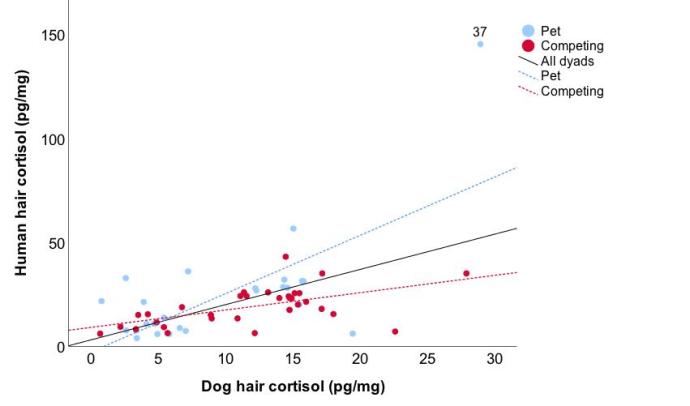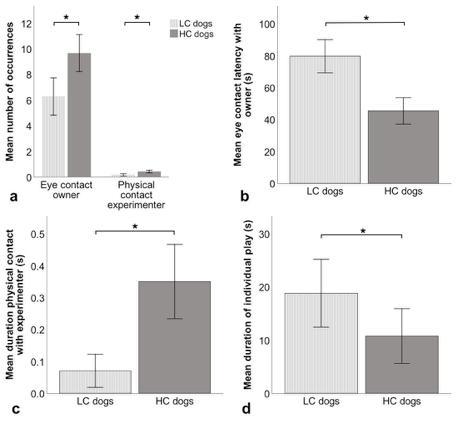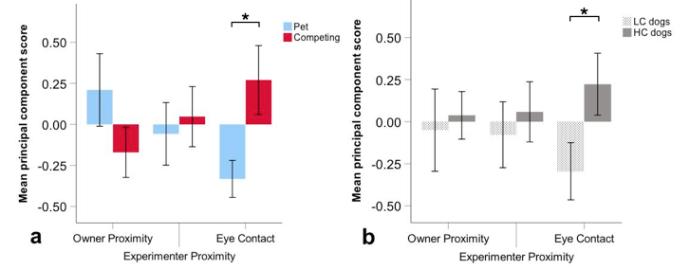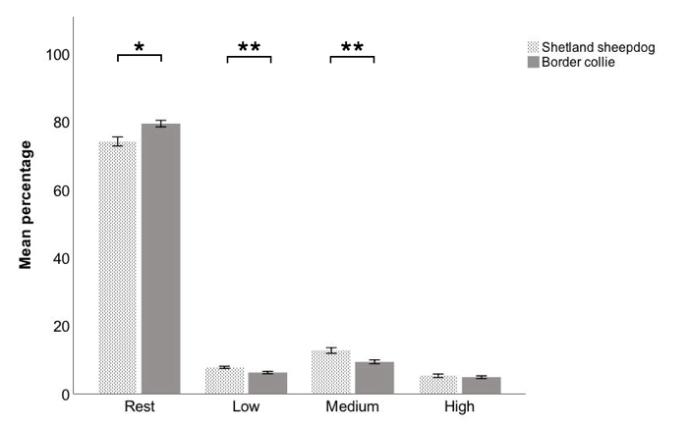Main Results
Hair Cortisol
- A significant positive correlation was found between dog and owner hair cortisol levels (Fig 1) (p =< .001).


Dyads were also split into two groups based on low (LC; ≤10 pg/mg) or high dog hair cortisol (HC; >10 pg/mg).
During the unsolvable-problem task:
- HC dogs had significantly higher number of eye contact occurrences (Fig 2a) (p =.034) and shorter eye contact latencies with their owner (Fig 2b) (p =.006) compared to LC dogs.
- HC dogs also had more (Fig 2a) (p =.045) and longer physical contact occurrences with the experimenter (Fig 2c) (p =.029) compared to LC dogs.
During the separation-reunion task:
- LC dogs showed significantly longer durations of individual play in comparison with HC dogs (Fig 2d) (p =.021).
- HC dogs tended to have longer durations of physical contact with their owner compared to LC dogs (p =.052).
Principle Component Analysis (PCA)
In order to reduce the number of variables, a total of nine behavioral variables from the unsolvable problem task were grouped into three principal components (PC) using a PCA: ‘Owner Proximity’, ‘Experimenter Proximity’, ‘Eye Contact’.
- Competing dogs scored significantly higher on ‘Eye Contact’ in comparison to pet dogs (Fig 3a) (p =.021).
- HC dogs scored significantly higher on ‘Eye Contact’ in comparison to LC dogs (Fig 3b) (p =.050).

Pearson correlation coefficients were calculated to determine relationships between Principle Components and other behavioral, physiological, and questionnaire variables.
- ‘Eye Contact’ correlated positively with ‘Training sessions/week’ (p =< .001)
- ‘Eye Contact’ correlated positively ‘Responsiveness to training’ (p =.046)
- ‘Eye Contact’ correlated positively Trainability’ (p =.048)
- Dog hair cortisol correlated positively with ‘Eye Contact’ (p = .009).
PetPace Activity
- Border collies had significantly higher resting percentages compared to Shetland sheepdogs (p =.010)
- Shetland sheepdogs had higher low (p =.006) and medium (p =.009) activity compared to border collies.

Responsible for this page:
Director of undergraduate studies Biology
Last updated:
05/16/18
